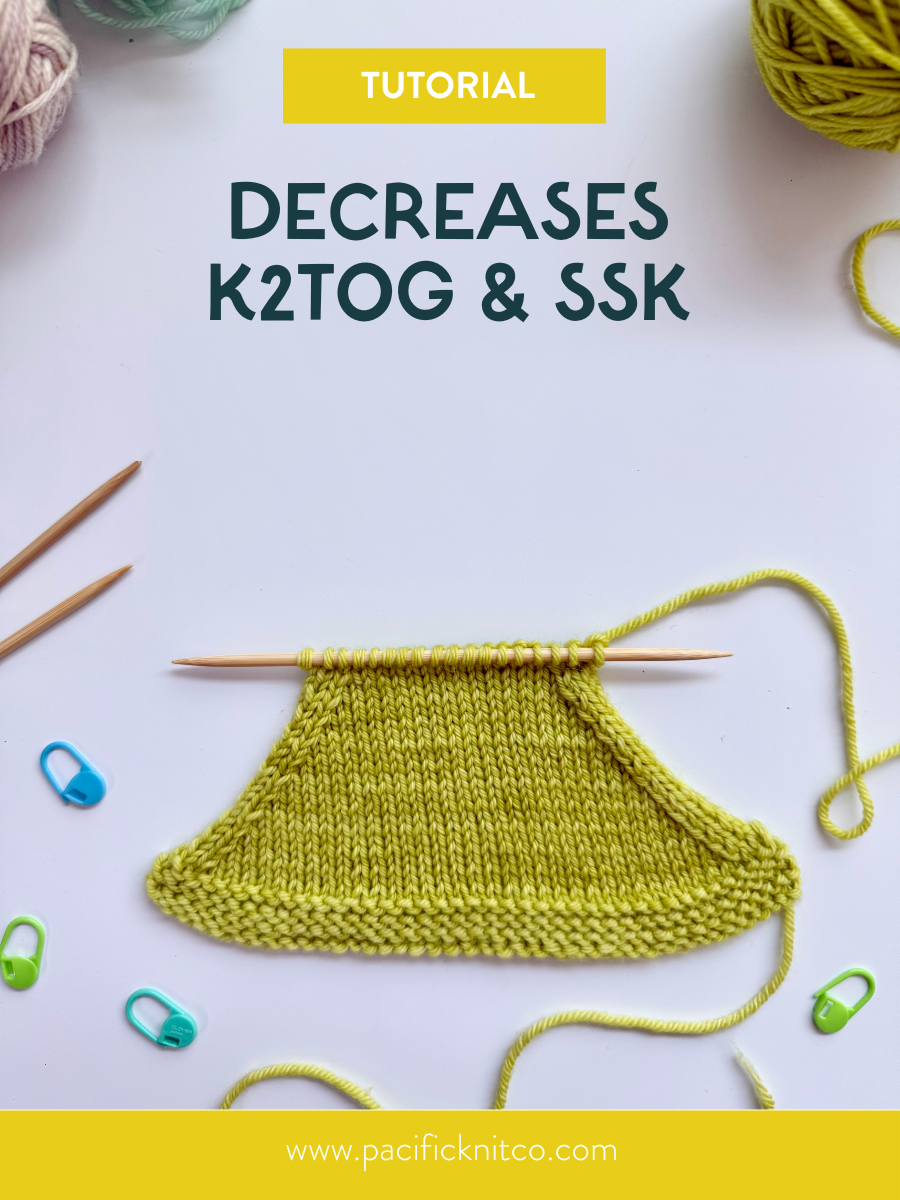How to Read a Colorwork Chart

Feeling intimidated by the idea of knitting from a chart? If you are new to colorwork knitting, or have never knit from a chart before, the idea of following a pattern without any words can seem a bit daunting.
Doodle Charts are a great introduction to stranded colorwork charts, because they are bite-sized, mini-charts! The small size makes them a great place to start, and this post will give you all the tips & tricks to understanding everything about colorwork charts.

Anatomy of a colorwork chart
Every designer will have charts that look slightly different, depending on their style and how they create the chart during the design process - but here are the standard things to look for:
CHART SIZE
The width of the chart is the number of stitches in a repeat. For example: a chart that is 24 squares wide will be knit over 24 stitches. This number is usually listed on the top or the bottom of the chart, and is sometimes also marked off in smaller increments (such as a number or bold vertical line every 5 stitches).
The height of the chart is the number of rows/rounds. For example: a chart that is 5 squares tall will be knit over 5 rows/rounds. This number is usually listed on one (or both) sides of the chart, and is similarly often marked off in smaller increments.

STITCHES & COLORS
Each square in the chart is an individual stitch.
In a colorwork chart, every different square color represents and different color of yarn. For simple charts, this is often done in high-contrast white & dark gray (some patterns will use the color of the suggested yarn in the squares, but this is less common).


How to knit from a chart
DIRECTION OF KNITTING
One of the common questions when first working with charts is "where do I start". Literally, "what part of the chart do I start with?"
The chart is laid out to look like the finished motif, viewed from the Right Side (RS) of your work. The direction you read aligns with the direction you knit:
When working across a round of knitting, you are knitting from right to left* (i.e. the next stitch you are going to work will always be to the left of the one you just completed).
Same with the rounds: the next round you will work will be above the round you just completed.
So with a chart, you start at the bottom, to the right. The first stitch in a chart is in the bottom, right-hand corner. Then you simply work from right to left across the row of squares, and move up the chart as you complete each round.
*Note: if you are working a chart FLAT, the reading direction will alternate for each row. Because the chart shows only the Right Side of the work, you will knit back across the chart from left to right when working a Wrong Side row.

CHART REPEATS
Pacific Knit Co's Doodle Charts are all drawn at 24 stiches wide.
This same 24 stitch repeat is worked all the way around the project, the same way you would work something like [*knit 10, purl 2, repeat from * to end of round] over and over across the round. That means that when you get to the end of the 24 stitch chart, you simply go back to the start and work it again, as many times as needed, until you are back at the beginning of round.

Once you've finished a round, simply move to the next row up the chart, and start again.

Some colorwork charts (including the one in this example) can be split into repeats that are smaller than 24 stitches wide. Pacific Knit Co. Doodle Charts will note when this is the case. For more info about finding smaller repeats in a chart, take a look at our post about Doodle Repeats: 12 vs. 24 Stitches.
CHART COLORS (+/- SYMBOLS)
Each square is one stitch, and each different color square is a different color yarn. So as you knit across a chart, each stitch will be worked in the corresponding color.
For charts that are in white & grey, you choose which of your yarns corresponds to which square color, and keep that consistent throughout that chart. You can write down which colors you are using, if that helps you keep track.
Most stranded colorwork is designed to be worked in stockinette in the round - meaning that all stitches in the chart will be knit stitches. If there is any deviation from this (for example, increases/decreases or adding texture) this should be defined in a key in the pattern.
In general, any square that does NOT contain a symbol should be worked as a knit stitch.

CHARTS WITH CHANGING STITCH COUNTS
For some projects, the number of stitches will change over the height of a chart. This happens when there are increases or decreases within the rounds that the chart is worked over. Some places you may see this would be sweater yokes, tops of mittens, crown decreases on a hat, etc. where the rows get shorter or longer within a single chart.
When this happens, the chart will not be a rectangle, but will instead have 'missing' squares. These blank spaces represent the stitches that don't exist on that round, but do exist on the round above or below. For example: if I increase 2 stitches on round 10, then round 11 will have two extra squares of chart.

Ready to dive into colorwork knitting? Start with our Basic Doodle projects, which are great for beginners as the charts are simple and don't require you to catch any floats.
Happy Doodling!
Blog co-written by Grey Lundy and Jamie Lomax. Charts featured are from our Basic Doodle collection.




